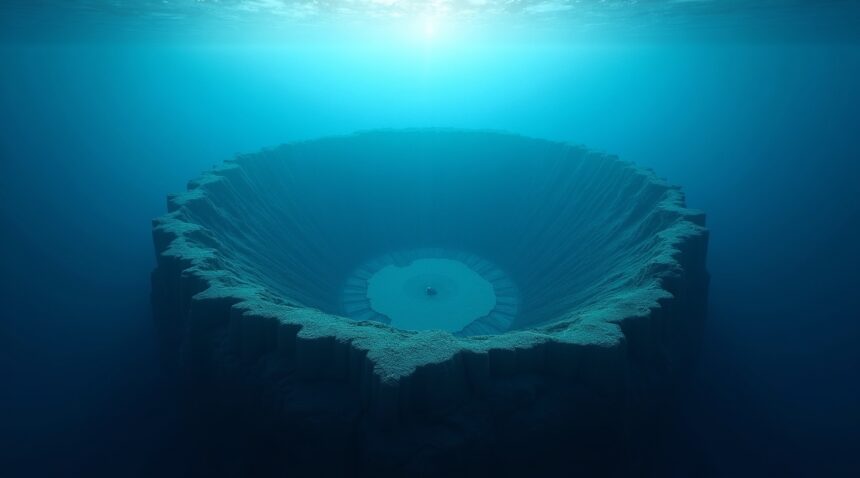Marine geophysicist Jenny Anne Barretto’s 2019 discovery of the Apolaki Caldera has transformed scientists’ understanding of volcanic systems, revealing Earth’s largest known caldera stretching 150 kilometers across beneath the Philippine Sea.
This extraordinary underwater formation, named after the Filipino sun god meaning “giant lord,” dwarfs all previously known calderas. Its scale is so massive that scientists have looked beyond Earth—toward planetary formations on Venus and Mars—for comparative analysis, highlighting its geological significance.
Key Takeaways
- The Apolaki Caldera measures 150 kilometers in diameter, making it more than twice the size of Yellowstone’s 70-kilometer-wide caldera and earning it the title of Earth’s largest known volcanic caldera.
- Located beneath the Philippine Sea within the Benham Rise plateau, the caldera features dramatic underwater topography with depths ranging from 718 to 4,510 meters.
- Formation occurred over 30 million years ago during a flood basalt event, showcasing complex structural elements such as scalloped escarpments, a U-shaped basin, and a resurgent dome.
- Revealed using advanced marine geophysical techniques, the structure was uncovered through sophisticated bathymetric mapping beneath thousands of feet of seawater.
- Ongoing research continues to examine the caldera’s formation, volcanic origins, and implications for oceanic volcanism, potentially leading to future discoveries of similarly massive submerged volcanic systems.
For more insight into Dr. Barretto’s groundbreaking work, you can explore her published findings through the research paper on the Marine Geophysical Research journal.
World’s Largest Volcanic Caldera Discovered in Philippine Sea
The Apolaki Caldera holds the extraordinary distinction of being Earth’s largest known volcanic caldera, stretching an impressive 150 kilometers (93 miles) across. This monumental geological formation dwarfs all other known calderas on our planet, making it a discovery that fundamentally changed our understanding of volcanic systems and their potential scale.
Marine geophysicist Jenny Anne Barretto and her research team made this groundbreaking discovery in 2019 while conducting studies of the Benham Rise, also known as the Philippine Rise. Their work in the Philippine Sea revealed a volcanic structure so massive that it challenged existing geological knowledge. The discovery process proved challenging because no terrestrial comparison existed for something of this magnitude.
A Discovery Beyond Earth’s Scale
Scientists faced an unprecedented situation when attempting to classify and understand the Apolaki Caldera’s true scope. The research team had to look beyond Earth’s geological features for comparative analysis, turning their attention to volcanic formations on Venus and Mars. This interplanetary perspective helped them grasp the full significance of their discovery and provided context for the caldera’s remarkable dimensions.
The caldera’s name carries deep cultural significance, drawing from rich Filipino mythology. “Apolaki” translates to “giant lord” in Filipino, referencing the ancient god of the sun and war. This powerful name perfectly captures the imposing nature of this geological giant, reflecting both its enormous size and the reverence it commands in scientific circles.
Located beneath the waters of the Philippine Sea, the Apolaki Caldera represents more than just a record-breaking geological feature. Its discovery has opened new avenues for understanding large-scale volcanic activity and the processes that create such massive structures. The formation challenges previous assumptions about the maximum size volcanic systems can achieve on Earth.
The discovery process involved sophisticated marine geophysical techniques that allowed Barretto’s team to map the seafloor and identify the caldera’s distinctive features. Their research revealed a structure that extends far beyond what scientists previously thought possible for terrestrial volcanic formations. This finding has significant implications for understanding volcanic hazards, geological history, and the dynamic processes that shape our planet’s surface.
Scientific interest in the Apolaki Caldera continues to grow as researchers work to understand its formation history and potential for future activity. The structure’s immense size suggests it formed through processes that operated on a scale rarely seen in Earth’s geological record. Studies of this formation could provide insights into massive geological formations and their impact on regional and global systems.
The caldera’s location in the Philippine Sea places it within one of the most geologically active regions on Earth. This positioning provides researchers with an opportunity to study how such large volcanic structures interact with tectonic processes and oceanic systems. The discovery has also sparked interest in exploring other underwater geological features that might rival the Apolaki Caldera’s size.
Understanding the Apolaki Caldera’s formation and characteristics requires interdisciplinary approaches that combine marine geology, volcanology, and advanced imaging techniques. The discovery demonstrates how modern scientific methods can reveal hidden geological wonders that reshape our understanding of Earth’s volcanic potential. Research into this formation continues to provide valuable data about large-scale geological processes and their long-term effects on our planet’s development.
The Apolaki Caldera stands as a testament to the incredible scale of geological processes and the ongoing discoveries that await beneath our planet’s surface. Its recognition as the world’s largest known caldera marks a significant milestone in geological science and highlights the importance of continued exploration and research in understanding Earth’s dynamic systems.
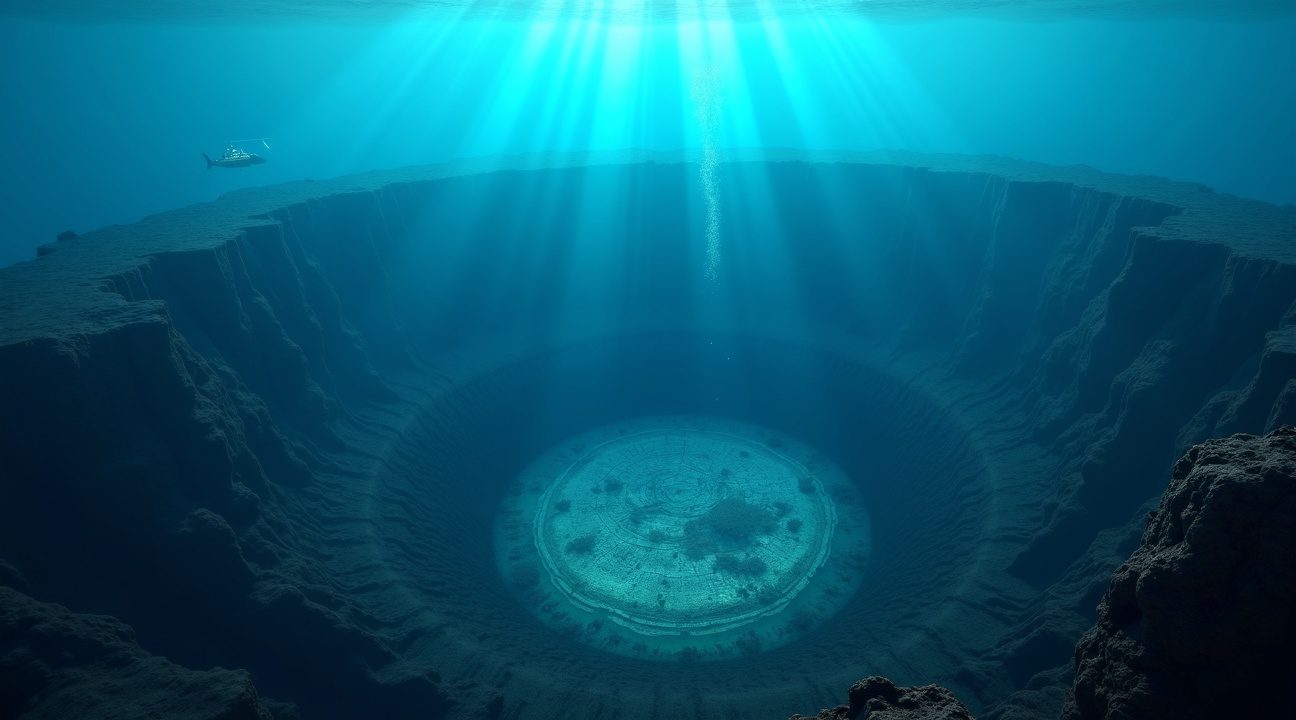
Hidden Beneath the Waves: Location and Underwater Setting
The Apolaki Caldera lies concealed beneath the vast expanse of the Philippine Sea, resting within the Benham Rise—an enormous undersea plateau that stretches approximately 250 kilometers east of Dinapigue, Isabela. This underwater geological formation occupies precise coordinates at 16°30′N 124°45′E, with its boundaries extending from 15°52′N to 17°47′N latitude and 123°31′E to 125°41′E longitude.
The Massive Scale of Benham Rise
The Benham Rise spans an impressive 110,000 square kilometers, making it roughly equivalent to the size of Cuba. This undersea plateau serves as the foundation for one of Earth’s largest calderas, creating a unique oceanic geological environment that remains largely unexplored. The plateau’s formation results from extensive volcanic activity that occurred over millions of years, building up layer upon layer of volcanic material beneath the ocean’s surface.
Scientists have discovered that this underwater landscape contains a thick accumulation of magmatic and volcanic rocks reaching depths of up to nine miles. These formations tell the story of intense geological processes that shaped this region through repeated eruptions and cooling cycles, creating the foundation upon which the Apolaki Caldera now rests.
Dramatic Underwater Topography
The caldera’s depth varies dramatically across its expanse, ranging from 718 meters at its shallowest points to an impressive 4,510 meters at its deepest sections. This variation creates a total relief of 3,792 meters, forming steep underwater cliffs and valleys that rival many terrestrial mountain ranges. The dramatic topographical changes occur beneath thousands of feet of seawater, making direct observation challenging even with modern technology.
I find it fascinating that such massive geological structures exist completely hidden from surface view. The caldera’s position within the Philippine Sea places it in one of the most geologically active regions on Earth, where tectonic plates converge and create the conditions necessary for such large-scale volcanic formations. This underwater setting protects the caldera from surface erosion while preserving its structure for scientific study.
The discovery of Apolaki’s true dimensions required advanced underwater mapping technology and years of research to piece together the complete picture of this hidden giant. Modern bathymetric surveys revealed the caldera’s circular structure and confirmed its status as potentially the world’s largest known caldera, demonstrating how much remains to be discovered in our ocean depths.
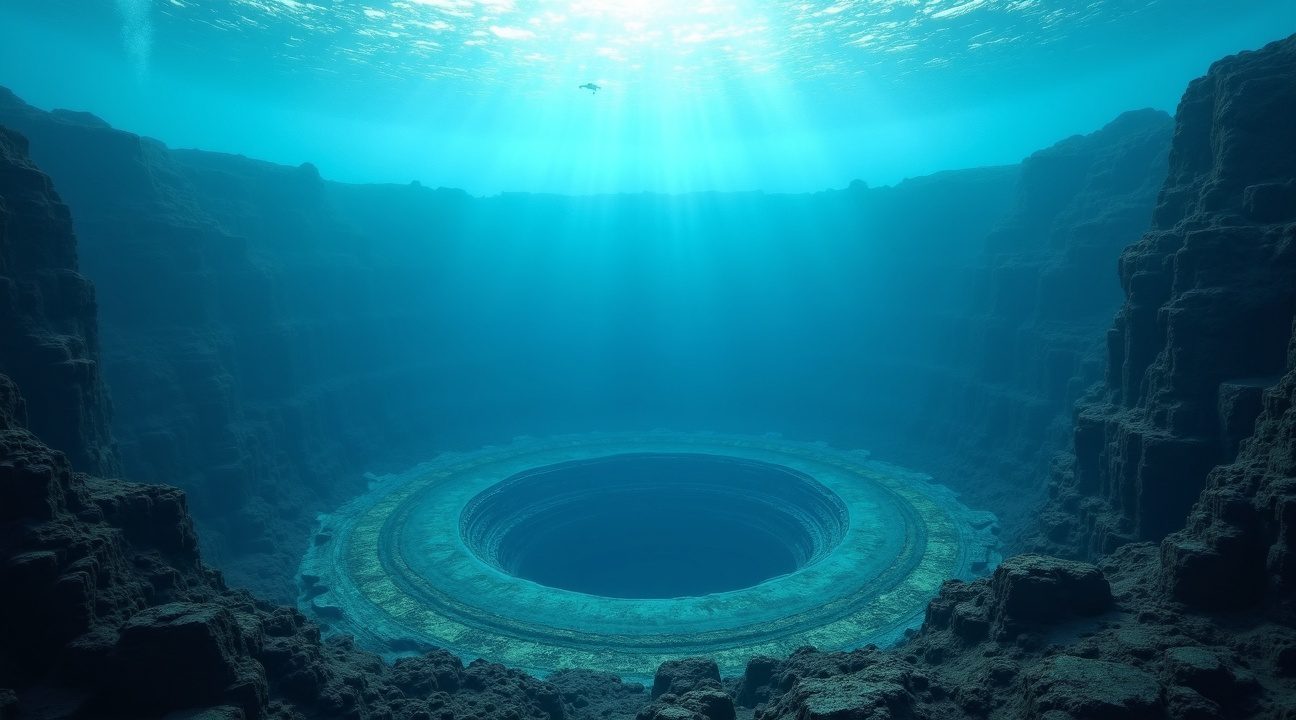
Massive Scale Comparison with Famous Volcanic Giants
The Apolaki Caldera’s sheer magnitude becomes truly apparent when it is placed alongside other famous volcanic giants that have captured scientific attention for decades. With its impressive 150-kilometer diameter, this underwater colossus completely redefines our understanding of caldera scale and establishes itself as the largest known caldera on Earth.
Dwarfing Yellowstone and Other Supervolcanoes
When comparing the Apolaki Caldera to Yellowstone, the size difference is staggering. Yellowstone Caldera measures approximately 70 kilometers across, making Apolaki more than twice its size. This comparison highlights just how extraordinary this Philippine discovery truly is. Lake Taupo in New Zealand, another significant volcanic feature, spans about 48 kilometers, while the famous Toba caldera in Indonesia reaches around 100 kilometers in diameter.
These measurements place Apolaki in a category entirely its own, surpassing even the most recognized supervolcanoes that scientists have studied extensively. The caldera’s dimensions challenge previous assumptions about the maximum possible size of volcanic collapse structures and force researchers to reconsider classification systems for these geological features.
Establishing New Volcanic Benchmarks
The discovery of Apolaki has fundamentally shifted the benchmark for what constitutes a massive volcanic caldera. Previous record holders pale in comparison to this underwater giant, much like how researchers continue to discover massive geological formations that reshape our understanding of Earth’s features.
Scientists now use Apolaki as the gold standard when discussing supervolcano classification, and its discovery has prompted renewed interest in searching for similarly large structures hidden beneath the ocean floor. The caldera’s scale suggests that our planet may harbor even more impressive volcanic features waiting to be discovered, particularly in unexplored marine environments.
This size comparison isn’t just about numbers – it represents a paradigm shift in volcanology. The Apolaki Caldera demonstrates that Earth’s most impressive geological features might still remain hidden beneath our oceans, waiting for advanced technology and persistent research to reveal their secrets. Its discovery continues to influence how scientists approach marine geological surveys and caldera identification methods.
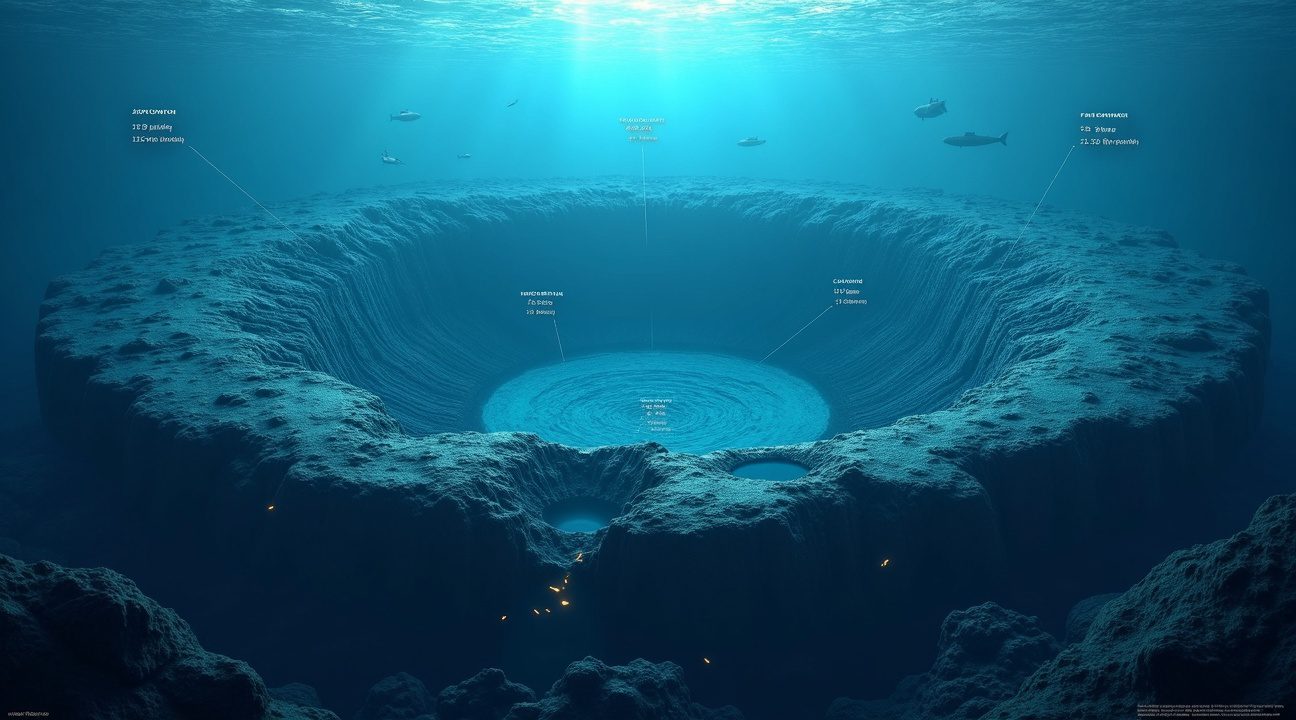
Ancient Volcanic Formation and Complex Structure
I’ll explore the fascinating geological architecture of Apolaki, a massive volcanic caldera that represents one of nature’s most dramatic examples of large-scale volcanic collapse. This underwater giant formed through a catastrophic process where a volcano literally collapsed into itself following extensive eruptive activity and the withdrawal of its underlying magma chamber.
Distinctive Structural Features
Multibeam bathymetry has revealed Apolaki’s remarkable structural complexity, showcasing features that tell the story of its violent past:
- A circular segmented ridge spanning approximately 150 kilometers in diameter
- Scalloped inward escarpments that create dramatic underwater cliffs
- A 20-kilometer-wide intra-caldera bench providing stepped terracing
- A distinctive U-shaped moat-like basin carved into the seafloor
- A stepwise floor that descends about 1 kilometer below the outer ridge
- A breached rim and resurgent dome indicating multiple phases of volcanic activity
These structural elements demonstrate that Apolaki experienced a complex, multi-phase volcanic lifecycle that included both quiet effusive periods and explosive events. The breached rim suggests that massive eruptions eventually broke through the caldera walls, while the resurgent dome indicates that magma continued to push upward even after the initial collapse.
Formation of this colossal caldera dates back over 30 million years, with rock samples revealing ages between 47.9 to 26 million years. This timeframe places Apolaki’s development within a period of significant global volcanic activity known as a flood basalt episode. During these extraordinary geological events, thick lava flows covered vast areas within geologically brief periods, often spanning thousands of square kilometers.
Such widespread volcanic episodes carry profound implications beyond their immediate geological impact. Scientists have linked these massive volcanic events to mass extinctions throughout Earth’s history, as the enormous volumes of gases and ash released during flood basalt episodes can dramatically alter global climate patterns.
The scale of Apolaki’s structure becomes even more impressive when considering that its formation involved processes similar to those that created other significant geological features, though the precision of modern mapping technology has only recently allowed scientists to fully appreciate its true dimensions and complexity beneath the Philippine Sea.
Scientific Breakthrough and Ongoing Research Implications
The discovery of Apolaki Caldera represents a major advancement in our understanding of oceanic volcanism and geological processes within the West Philippine Basin. This massive underwater structure challenges conventional theories about volcanic formation in marine environments, opening new avenues for scientific exploration.
I find the caldera’s immense scale particularly fascinating because it suggests the presence of a broad, shallow, tabular magma chamber beneath the seafloor. This formation likely resulted from complex interactions between a hotspot and mid-ocean spreading ridge system, creating conditions unlike anything previously documented in this region. The sheer magnitude of Apolaki indicates that volcanic processes in oceanic settings can produce features far larger than scientists previously thought possible.
Distinguishing Volcanic Origins from Impact Events
Morphological analysis reveals compelling evidence that Apolaki’s characteristics align more closely with volcanic calderas than impact craters. Key features supporting this volcanic origin include:
- An uplifted central block that rises from the caldera floor
- Substantial sediment infill accumulated over geological time
- Structural patterns consistent with volcanic collapse mechanisms
- Absence of shock metamorphism typically found in impact sites
Scientists continue collecting rock samples and conducting detailed geological surveys to confirm these volcanic origins definitively. Each sample provides crucial data about the magma composition and eruption history that shaped this underwater giant.
The ongoing research extends beyond simple classification. Teams are investigating how such massive volcanic structures form and what their existence means for our understanding of oceanic crust development. The tectonically active nature of the Benham Rise area adds another layer of complexity, as researchers must consider how current seismic activity might relate to the caldera’s formation and potential future behavior.
This discovery has implications that reach far beyond the Philippines. Scientists are now questioning whether similar massive underwater structures exist elsewhere in Earth’s oceans, potentially hidden beneath sediment layers or misidentified in previous surveys. The methodologies developed for studying Apolaki are already being applied to other suspected calderas across the Pacific Ring of Fire.
Current research initiatives focus on understanding the caldera’s role in regional volcanism patterns and its relationship to the broader tectonic framework of the West Philippine Basin. Scientists are particularly interested in determining whether Apolaki represents a one-time catastrophic event or part of a cyclical volcanic process that could provide insights into future geological activity in this region.
Expanding Understanding of Earth’s Volcanic History
The discovery of the Apolaki Caldera represents a significant breakthrough in volcanology and planetary geology, fundamentally changing how I view the Philippines’ underwater geological landscape. This massive formation beneath the Benham Rise demonstrates that our planet continues to reveal hidden secrets about its volcanic past, even in regions previously considered geologically quiet.
Scientists conducting research in this area have uncovered evidence that large igneous provinces play crucial roles in shaping Earth’s geological evolution. The Apolaki Caldera’s immense size and unique characteristics provide fresh insights into how supervolcanic systems develop and influence regional geology over millions of years. These findings challenge previous assumptions about volcanic activity patterns in Southeast Asia’s marine environments.
Geological Classification and Comparative Analysis
Confirming Apolaki’s status as a true volcanic caldera requires extensive geological processes and detailed comparative studies with other known calderas worldwide. Researchers examine several key factors when making this determination:
- Structural morphology and rim characteristics that distinguish calderas from other geological formations
- Volcanic deposit analysis to identify eruption patterns and magma composition
- Seafloor mapping data that reveals collapse features typical of caldera formation
- Comparative studies with terrestrial calderas to establish classification criteria
The Benham Rise continues to attract scientific attention because of its potential to yield additional important geological discoveries. This underwater plateau’s complex structure suggests that massive geological formations may harbor more surprises beneath the ocean floor. Ongoing research efforts focus on understanding how these large igneous provinces contribute to our planet’s geological history and their influence on regional tectonic activity.
Advanced imaging technology and deep-sea exploration techniques allow researchers to study the Apolaki Caldera’s internal structure without disturbing its natural state. These methods reveal critical information about magma chamber evolution and the processes that led to this supervolcanic system’s formation. The data collected from this research enhances our understanding of how underwater volcanic systems differ from their terrestrial counterparts and contributes valuable knowledge to the field of planetary geology.
The implications of this discovery extend beyond academic interest, as understanding large volcanic systems helps scientists assess potential geological hazards and their historical impact on climate patterns. Research into the Apolaki Caldera provides essential data for modeling how supervolcanic eruptions might affect global atmospheric conditions and ocean chemistry, making this discovery relevant to both historical geological studies and future planetary monitoring efforts.
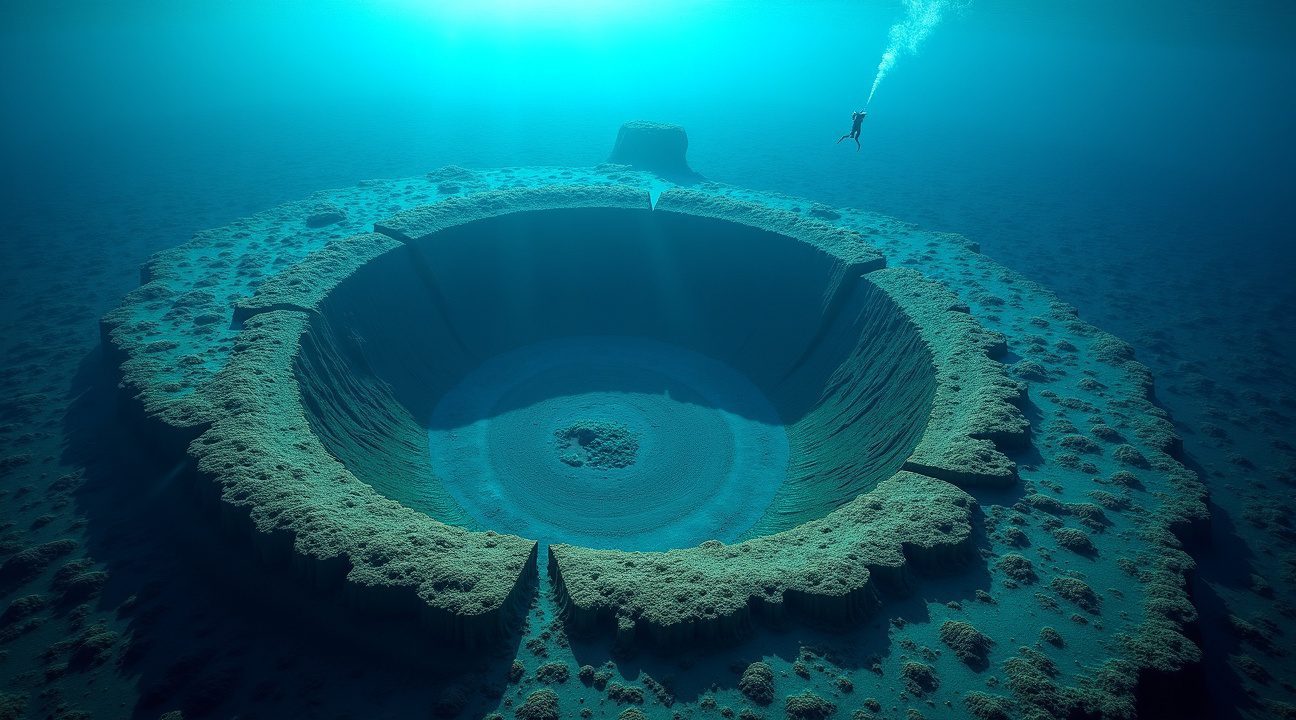
Sources:
Wikipedia – Apolaki Caldera
Tech Explorist – Philippines: Earth’s largest known caldera
Marine Regions
GNS Science – Scientists discover what might be the world’s largest known caldera
YouTube
ScienceDirect
Lunar and Planetary Institute – LPSC 2022 Abstract #1179

